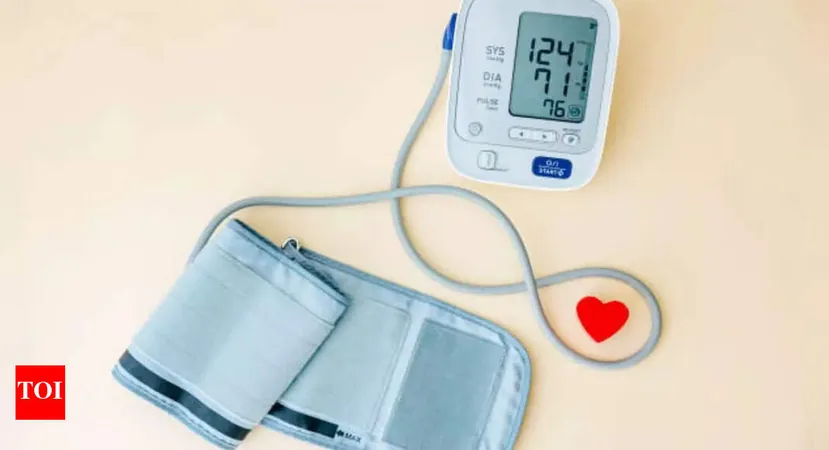
New Guidelines from the American Heart Association Show Shocking Rise in Hypertension Rates Among Americans
2025-09-21
Author: Ling
A Wake-Up Call for Heart Health
The American Heart Association (AHA) has just shaken up the health world with revised hypertension guidelines that now classify nearly half of all Americans as having high blood pressure. This worrying statistic underscores the urgency for lifestyle changes to combat one of the leading risk factors for heart disease and stroke.
What's New in the Guidelines?
In a landmark update, the AHA has eliminated the category of 'prehypertension', replacing it with 'elevated blood pressure'. The new benchmarks for blood pressure readings are now stricter: 120–129 systolic pressure qualifies as elevated, while stage 1 hypertension is defined by readings between 130–139 systolic over 80–89 diastolic. Stage 2 hypertension starts at 140/90, and anything reading 180/120 or higher is deemed a hypertensive crisis.
Lifestyle Changes: Your Best Defense
The new guidelines emphasize lifestyle adjustments as crucial for managing and preventing hypertension. Key recommendations include adopting the DASH diet—which focuses on fruits, vegetables, whole grains, and low-fat dairy—limiting alcohol intake, and engaging in regular exercise. Moderate drinking is capped at two drinks per day for men and one for women, as every 10 grams of alcohol can raise systolic blood pressure by approximately 1 mmHg.
Need for Action: The 8 Essential Health Behaviors
To tackle hypertension effectively, the AHA outlines eight vital health behaviors that everyone should follow: 1. Maintain a healthy diet 2. Engage in regular physical activity 3. Avoid tobacco 4. Get 7-9 hours of quality sleep per night 5. Manage weight, cholesterol, blood sugar, and blood pressure levels 6. Keep stress under control 7. Stay hydrated 8. Regularly monitor your blood pressure
Using Technology to Track Your Health
As part of the new guidelines, patients are encouraged to consult their doctors about blood pressure screenings based on these updated criteria. A free online tool called PREVENT can help calculate individual cardiovascular risk by considering factors like demographics, medical history, and blood pressure levels.
Confronting the Heart-Breaking Statistics
With almost 50% of Americans grappling with hypertension and only 25% managing it, the call for awareness and proactive health changes has never been more critical. As the rates of hypertension climb, addressing this public health crisis through informed lifestyle choices and guideline adherence is essential for better heart health and overall well-being.

 Brasil (PT)
Brasil (PT)
 Canada (EN)
Canada (EN)
 Chile (ES)
Chile (ES)
 Česko (CS)
Česko (CS)
 대한민국 (KO)
대한민국 (KO)
 España (ES)
España (ES)
 France (FR)
France (FR)
 Hong Kong (EN)
Hong Kong (EN)
 Italia (IT)
Italia (IT)
 日本 (JA)
日本 (JA)
 Magyarország (HU)
Magyarország (HU)
 Norge (NO)
Norge (NO)
 Polska (PL)
Polska (PL)
 Schweiz (DE)
Schweiz (DE)
 Singapore (EN)
Singapore (EN)
 Sverige (SV)
Sverige (SV)
 Suomi (FI)
Suomi (FI)
 Türkiye (TR)
Türkiye (TR)
 الإمارات العربية المتحدة (AR)
الإمارات العربية المتحدة (AR)